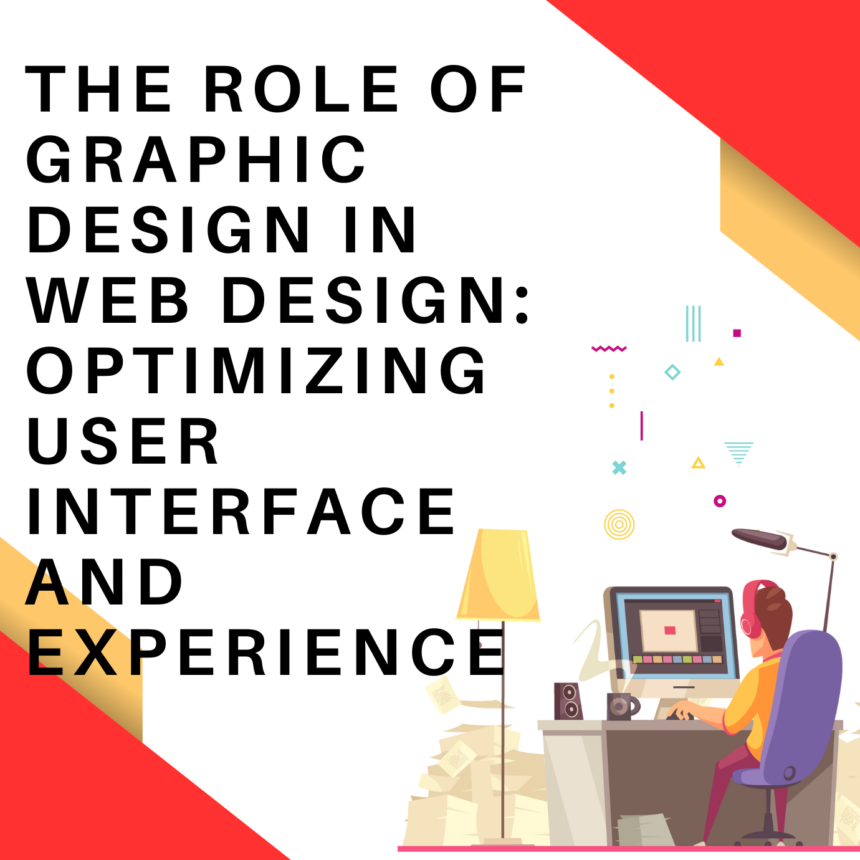In the digital age, web design plays a crucial role in creating visually appealing and user-friendly websites. Graphic design is an integral component of web design that focuses on optimizing the user interface (UI) and enhancing the overall user experience (UX). Here’s a closer look at the role of graphic design in web design and its impact on UI and UX optimization:
1. Visual Appeal and Branding:
Graphic design shapes the visual identity of a website, creating a cohesive and visually appealing interface. It involves selecting appropriate color palettes, typography, imagery, and graphic elements that align with the brand’s identity and resonate with the target audience. Effective graphic design helps create a strong first impression, captures users’ attention, and enhances brand recognition.
2. User Interface (UI) Design:
Graphic design is crucial in UI design, where designers create intuitive and visually engaging interfaces. It involves designing navigation menus, buttons, forms, icons, and other interactive elements that enable users to interact with the website seamlessly. Graphic designers focus on creating clear visual hierarchies, organizing information effectively, and guiding users through the interface to enhance usability and ease of navigation.
3. Visual Hierarchy and Information Architecture:
Graphic design helps establish a clear visual hierarchy, highlighting important elements and guiding users’ attention. Through the use of size, color, typography, and spacing, designers can create a sense of order and structure in the interface. Effective information architecture ensures that content is organized logically, allowing users to find information easily and reducing cognitive load.
4. Responsive and Adaptive Design:
With the increasing use of mobile devices, graphic design plays a critical role in responsive and adaptive web design. Designers ensure that the website layout, typography, and graphics adapt smoothly to different screen sizes and resolutions. This allows for a consistent and optimized user experience across devices, improving accessibility and usability.
5. Visual Consistency and Branding:
Graphic design ensures visual consistency throughout the website, aligning with the brand’s identity and creating a unified user experience. Consistent use of colors, typography, and graphic elements across pages helps establish a strong brand presence, fosters brand recognition, and enhances user trust.
6. Visual Communication and Storytelling:
Graphic design enables effective visual communication and storytelling on the website. Through the use of imagery, illustrations, icons, and infographics, designers convey messages, evoke emotions, and engage users. Well-designed visuals help simplify complex information, enhance understanding, and create a memorable user experience.
7. Usability and User Experience (UX) Optimization:
Graphic design plays a crucial role in optimizing usability and enhancing the overall UX of the website. Designers focus on creating user-friendly interfaces, intuitive interactions, and visually pleasing aesthetics. They consider factors such as legibility, readability, button affordance, and feedback mechanisms to ensure a smooth and enjoyable user experience.
8. Loading Speed and Performance:
Graphic design also influences the loading speed and performance of the website. Designers optimize images, graphics, and other visual elements to minimize file sizes and improve page load times. Balancing visual appeal with performance optimization is crucial to provide a fast and responsive browsing experience.
9. Call-to-Action (CTA) Design:
Effective graphic design helps create visually compelling and persuasive call-to-action (CTA) elements. Designers use color, typography, placement, and visual cues to attract users’ attention and encourage desired actions, such as signing up for a newsletter, making a purchase, or submitting a form. Well-designed CTAs contribute to improved conversion rates and achieve the website’s goals.
10. Iterative Design and Continuous Improvement:
Graphic design in web design is an iterative process that involves continuous improvement and refinement. Designers analyze user feedback, conduct usability testing, and utilize data-driven insights to optimize the interface and enhance the user experience over time. This iterative approach ensures that the website remains user-centric and adapts to evolving user needs and preferences.
Graphic design plays a fundamental role in web design, optimizing the UI and enhancing the overall UX. By creating visually appealing interfaces, establishing visual hierarchies, ensuring visual consistency, and optimizing usability, graphic design contributes to creating engaging and user-friendly websites that leave a lasting impact on users.
